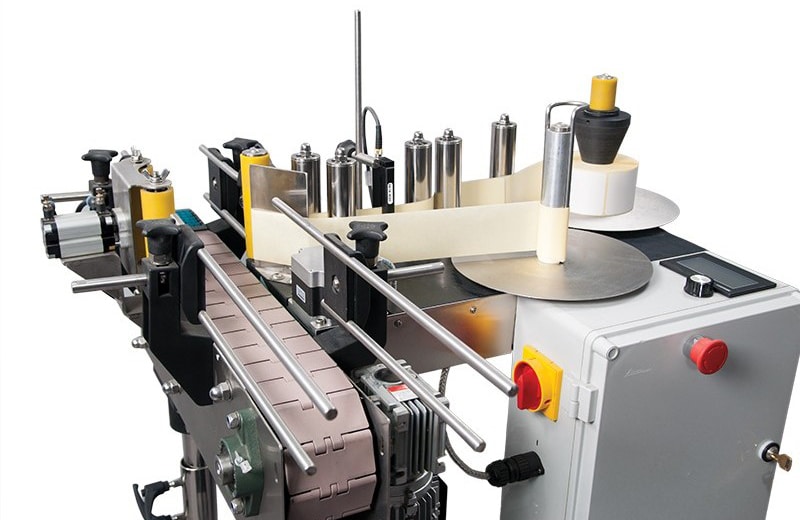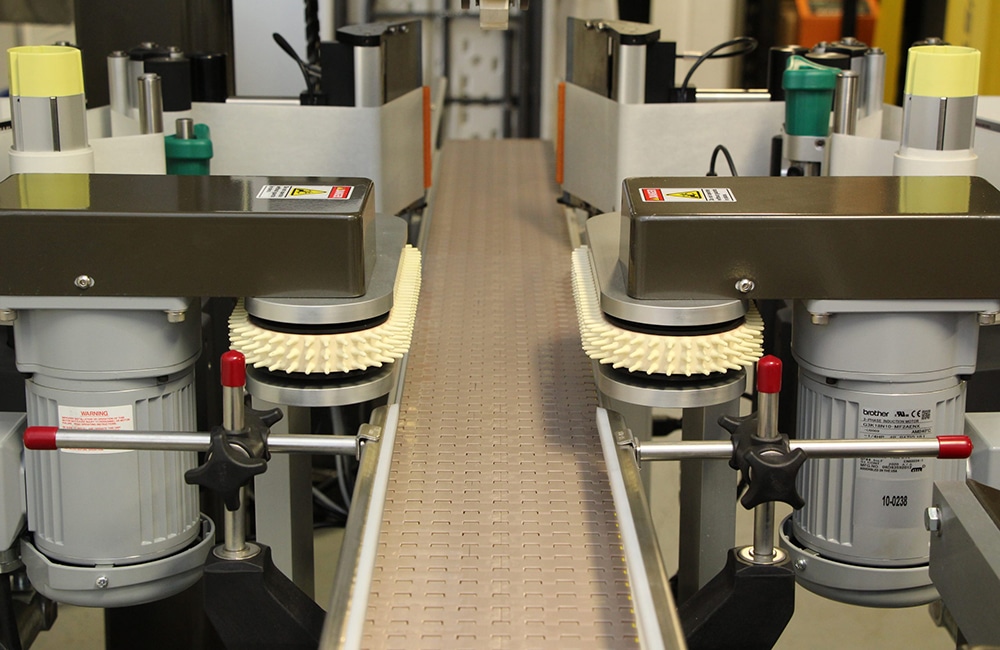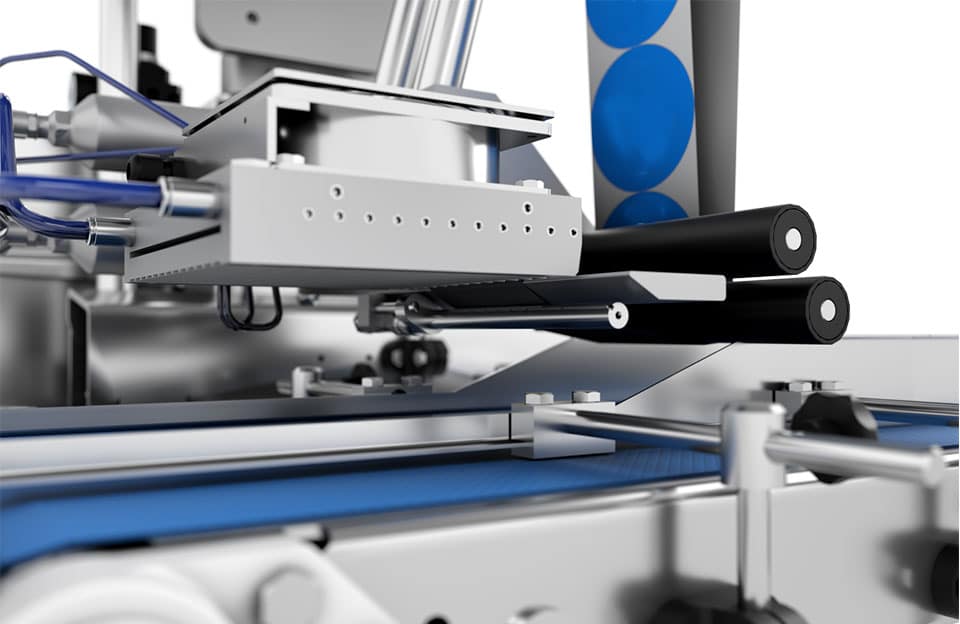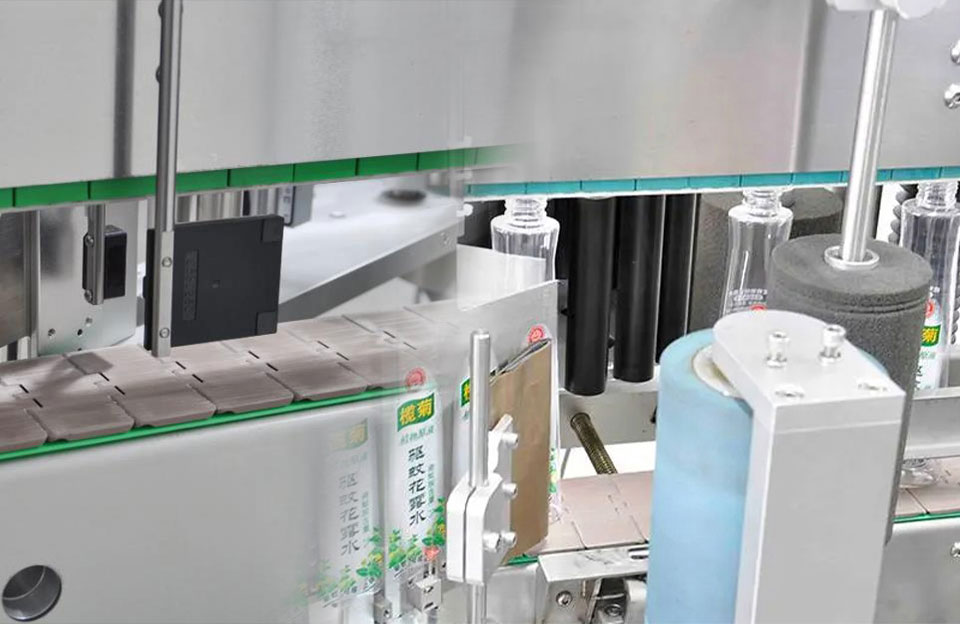The conveyor belt labelers are professional machines with high efficiency. In order to maintain the efficient operation of the machine, the machines needs regular maintenance, reasonable use, and timely maintenance. Through these methods, the service life of the conveyor belt labeler can be extended, and the stability and reliability of the equipment can be improved.
Conveyor Belt Labelers Inspection and Maintenance Plan
Documentation and Training:
- Gather all relevant documentation, including the manufacturer’s manual, schematics, and maintenance guidelines.
- Ensure the maintenance team is trained to properly operate and maintain the conveyor belt labelers.
Inspection Schedule:
- Establish a schedule for routine inspections. The schedule can vary based on machine usage but could be weekly, monthly, quarterly, and annually.
Weekly Inspections:
- Visual Check: Examine the machine for any visible damage, wear, or misalignment signs.
- Lubrication: Apply lubricants to moving parts as recommended by the manufacturer.
- Cleaning: Wipe down the machine to remove dust, debris, and adhesive residues.
- Verify Label Supply: Ensure labels and ribbons (if applicable) are loaded correctly.
Monthly Inspections:
- Check Labeling Accuracy: Test the machine’s accuracy by applying labels to sample products and measuring alignment.
- Sensor Calibration: Calibrate sensors to ensure accurate label placement.
- Check Electrical Connections: Inspect wiring for loose connections or damage.
Quarterly Inspections:
- Belt and Chain Inspection: Check tension and alignment of belts and chains, adjusting as necessary.
- Check Pneumatic Systems: Inspect air hoses, valves, and cylinders for leaks or malfunctions.
- Inspect Safety Features: Ensure emergency stops and safety interlocks are functioning correctly.
Semi-Annual Inspections:
- Review Machine Performance Data: Analyze any logged errors, jams, or downtime to identify recurring issues.
- Clean Internal Components: Remove covers and clean internal components like rollers and print heads.
Annual Inspections:
- Deep Cleaning: Thoroughly clean the machine’s interior and exterior surfaces.
- Replace Wearable Parts: Replace worn-out parts such as rollers, belts, and brushes.
- Electrical Check: Inspect control panels, switches, and fuses for signs of wear or damage.
Calibration and Testing:
- Regularly calibrate the machine according to manufacturer guidelines or after any major maintenance.
- Test the machine’s performance with different label sizes and materials.
Spare Parts Inventory:
- Maintain an inventory of critical spare parts such as sensors, belts, and motors to minimize downtime during repairs.
Reactive Maintenance:
- In case of a breakdown, follow troubleshooting guidelines in the manufacturer’s manual and address issues promptly.
Record Keeping:
- Maintain a detailed maintenance log for each inspection, noting any repairs, replacements, or adjustments made.
Continuous Improvement:
- Periodically review the maintenance logs to identify patterns of wear or recurring issues. Adjust the maintenance plan as needed.
Vendor Support:
- Establish a relationship with the machine’s manufacturer or a trusted vendor for technical support and spare parts procurement.

Conveyor Belt Labelers
Conveyor Belt Labelers Key Components Maintenance Guide
Maintaining key components of conveyor belt labelers is crucial to ensure consistent and reliable performance. Here’s a maintenance guide for some of the key components of conveyor belt labelers:
Label Application Head:
- Weekly: Inspect the label application head for debris, adhesive buildup, or misalignment.
- Monthly: Clean the label application head using a soft cloth and a mild solvent if needed.
- Quarterly: Calibrate the label application head according to the manufacturer’s guidelines to ensure accurate label placement.
Conveyor System:
- Weekly: Check the conveyor belt tension and alignment. Tighten or adjust as necessary.
- Monthly: Lubricate conveyor bearings and rollers if required by the manufacturer.
- Quarterly: Inspect the conveyor system for wear and tear. Replace any damaged or worn-out components.

Conveyor System
Sensors and Detection Devices:
- Weekly: Inspect sensors for dirt, dust, or misalignment. Clean or recalibrate as needed.
- Monthly: Test sensors’ responsiveness by running sample products through the machine.
- Quarterly: Replace sensors that are consistently malfunctioning or showing signs of wear.
Power Transmission Components (belts, chains, gears):
- Monthly: Inspect belts, chains, and gears for signs of wear, misalignment, or tension issues. Adjust or replace as needed.
- Quarterly: Lubricate gears and chains as recommended by the manufacturer.
Pneumatic System (if applicable):
- Monthly: Check air hoses, connections, and valves for leaks. Replace damaged components promptly.
- Quarterly: Lubricate pneumatic components according to the manufacturer’s guidelines.
Electrical Components:
- Weekly: Inspect wiring and connections for signs of damage or loose connections.
- Monthly: Check the machine’s frame and structure for corrosion, damage, or misalignment signs.
- Quarterly: Tighten any loose connections and address any issues with electrical components.
Frame and Structure:
- Monthly: Check the machine’s frame and structure for signs of corrosion, damage, or misalignment.
- Quarterly: Tighten bolts and fasteners to ensure stability.
Lubrication:
- Monthly: Follow the manufacturer’s recommendations for lubricating moving parts such as bearings, rollers, and chains.
Safety Features:
- Weekly: Test emergency stops and interlocks to ensure they are functioning correctly.
- Quarterly: Verify that all safety labels and signs are intact and legible.
Maintenance Logs:
- Maintain detailed maintenance logs for each key component, documenting inspections, cleaning, repairs, and replacements.
How to Establish Log and Problem Feedback Mechanism of Conveyor Belt Labelers Maintenance
Creating a conveyor belt labelers’ maintenance log and implementing a problem feedback mechanism is essential for keeping track of maintenance activities and addressing issues promptly. Here’s a step-by-step guide on how to establish these processes:
Maintenance Log:
- Choose a Format: Decide whether you’ll maintain a physical logbook, a digital spreadsheet, or a specialized maintenance management software. Digital formats offer easier data entry, searching, and analysis.
- Log Entries: For each maintenance activity, record the following details: Date and time of the activity, description of the maintenance task performed, components inspected, cleaned, repaired, or replaced, maintenance personnel involved, issues discovered during the maintenance, parts replaced and their serial numbers(if applicable), additional notes or comments.
- Schedule Entries: Assign a maintenance log entry for each scheduled maintenance activity (weekly, monthly, quarterly, etc.) and any unscheduled repairs.
- Signature/Approval: If using a physical logbook, include space for maintenance personnel to sign off on completed tasks. Consider using a checkbox or status indicator to mark tasks as completed in a digital format.
- Accessibility: Ensure the maintenance log is easily accessible to authorized personnel, supervisors, and management. Use shared drives or cloud-based platforms with proper access controls for digital formats.
Problem:
- Communication Channels: Set up channels for operators, maintenance personnel, and other relevant staff to report problems or anomalies with the conveyor belt labelers.
- Reporting Protocol: Establish a clear protocol for reporting problems, including the required information: Description of the problem, date and time of occurrence, machine location (if applicable), error codes or messages displayed, actions taken before or after the issue occurred.
- Response Time: Define a response time for addressing reported issues. Urgent problems should be addressed promptly, while less critical issues can follow a predefined timeline.
- Problem Tracking: Implement a system to track reported problems from submission to resolution. This could be part of your maintenance log or a separate tracking mechanism.
- Feedback Loop: Ensure a feedback loop where the person who reported the problem is updated on its resolution. This fosters transparency and confidence in the maintenance process.
- Continuous Improvement: Review reported problems and their resolutions to identify recurring issues. Use this data to improve maintenance procedures and prevent similar problems in the future.
Conclusion
In the actual use process, the enterprise can ensure the normal operation of the equipment by paying attention to the maintenance work of the conveyor belt labeler and reasonably arranging personnel to carry out maintenance work.


